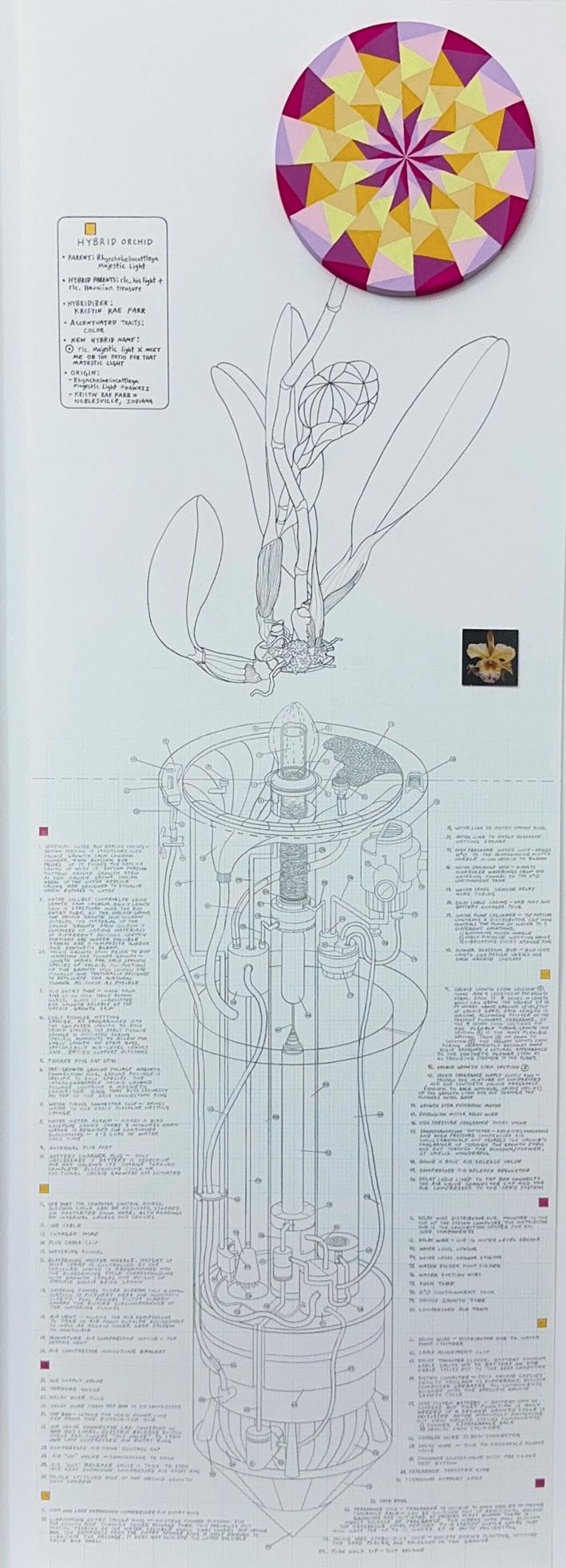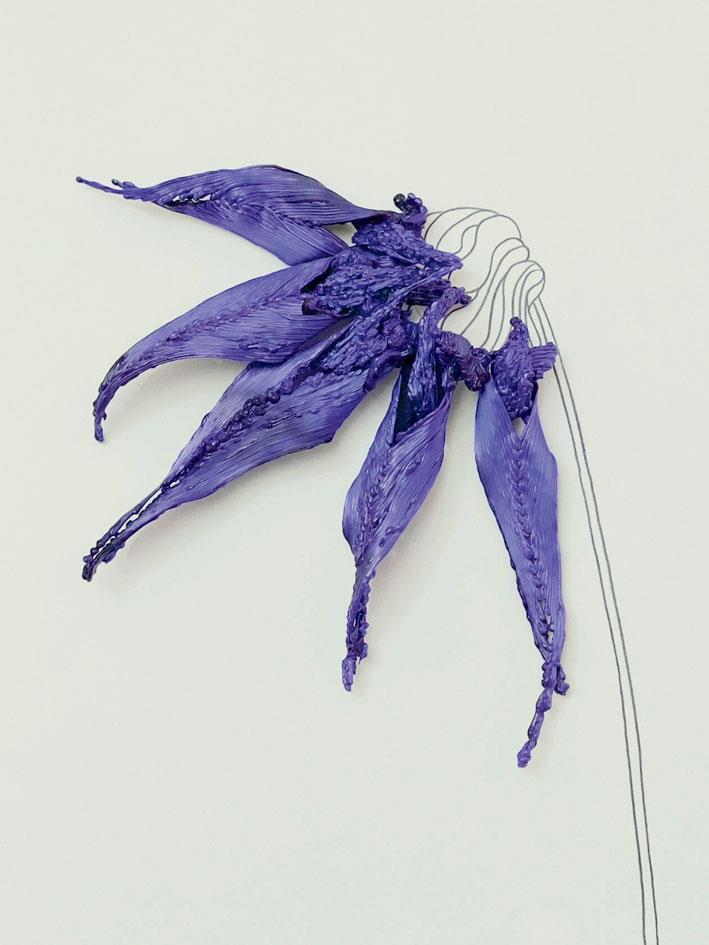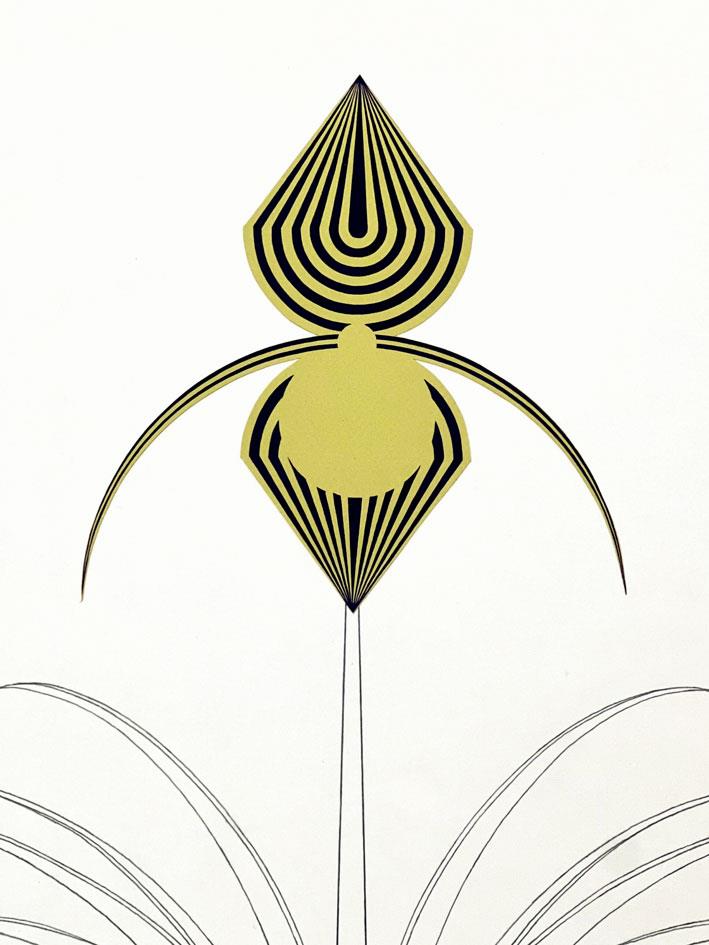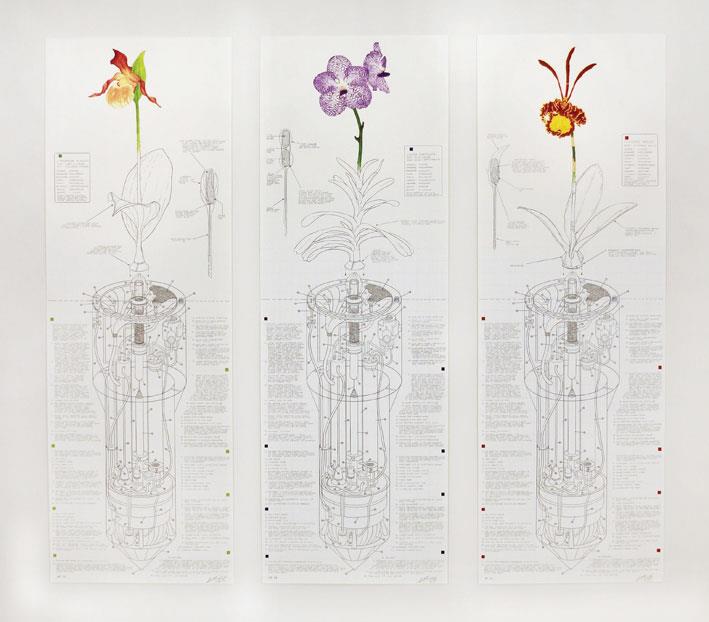 After two years of planning, discussing, replanning, juggling time zones, and surviving more than a few unexpected hiccups, here we are, finally opening the first of two major exhibitions in Malta by American artist Justin Amrhein, curated by yours truly.
After two years of planning, discussing, replanning, juggling time zones, and surviving more than a few unexpected hiccups, here we are, finally opening the first of two major exhibitions in Malta by American artist Justin Amrhein, curated by yours truly.
You might ask, how did this collaboration materialise? The answer is rather simple, another artist connected the dots for us. Rebecca Ranieri, whom I've worked with a few times before, met Justin at the Biennale in Saudi Arabia! She insisted we had to collaborate. And who are we to say no to sweet Rebecca? Our first phone call was a complete flop (hello, time zone mix-up), but the second one clicked. The rest? A beautiful concoction of 122 email threads, countless WhatsApp messages, and video calls where some of us were half-asleep while others were just waking up. Curator in Malta, artist in Saudi Arabia, project manager in Brazil, and marketing executive in New York, just to give you the gist. Fast forward to today: after two successful open call applications, one at Spazju Kreattiv and one at Muża, two of Malta's leading exhibition spaces, resulting in a duo of exhibitions, bound by a shared thematic thread, now known as The Maltese Diptych. But more on exhibition number two in my next article...

Mandatory background check: Amrhein's practice is grounded in environmentalism, often addressing our ever-growing climate crisis. Though originally rooted in drawing and painting, his work spans a wide range of media: sculpture, collage, video, digital fabrication, always adopting the form best suited to the idea. His two signature styles both draw on the visual language of machinery: one explores mechanical flowers and trees, the other presents blueprints of imagined objects. Whether small drawings on paper or large-scale installations, Amrhein's work dances between poetic precision and dystopian wonder.

This exhibition was sparked by Amrhein's first visit to the Saint James Cavalier building in 2023. He imagined a lavish mechanical greenhouse nested within a botanical garden. And he brought it to life! The result is a site-specific installation that pays homage to the Atrium's soaring glass ceiling, elegant spiral staircase, and its iconic palm tree - elements that inspired his Utopia Vision for a Dystopian Future. The work merges with the architecture, making it feel like nature and machines are cohabiting, negotiating space, and encouraging an intimate dialogue between the architectural features and the installation.

There is no fixed path to follow, much like the freedom one experiences in a greenhouse, but whichever way to take, you won't be able to miss the seriously large artwork dangling from the bridge, showing the Mechanical Slow Growth Palm Tree, which proudly mirrors its real counterpart, the real palm tree rooted in the Atrium. You'll also surely notice the surrounding 240cm tall cylinder, adorning the palm tree's trunk, depicting a detailed, external view of the tree's root system as a "negative" of Amrhein's signature 3D Blueprint sculpture series. This playful, life-size prototype provides a three-dimensional rendering of a mechanical botanical and connects directly to Amrhein's companion exhibition, 3D Blueprint Network - Malta Test Station, at Muża, the final chapter of the larger project, Maltese Diptych, but again, more on that in my next article about Amrhein.

One of the most exciting aspects of this whole project was Amrhein's idea to collaborate with numerous artists on his Mechanical Orchids - 28 artists to be exact. Three of whom are Maltese - Ryan Falzon, Martina Darmanin and Ruth Ancilleri. Of course, Ranieri is also one of the collaborating artists. These mechanical orchids, carefully scattered along the staircase of the Atrium and the Upper Atrium, invite the visitor to really explore the Atrium in its entirety.

Quick science interlude: Real hybrid orchids are made through selective cross-breeding, with over 150,000 variations in existence and endless possibilities. In this spirit, each invited artist was given access to a digital archive of hybrid orchids and asked to choose one species that resonated with them. The only creative limitation? Size. Everything else - medium, interpretation, materials - was up to them. The result? Thirty wildly different yet conceptually unified hybrids.

Each completed piece features Amrhein's signature schematic drawing at the base, meticulously detailing labeled mechanical parts that surround the conceptual "seed". Above this structure, each artist's interpretation takes form, visually representing the chosen orchid. Beneath the bloom, Amrhein includes the specific foliage for each flower, grounding the work in botanical reality. A photo of the original orchid is included, along with key botanical info tucked into what we're calling the Botany Box. It's as if each piece is part flower, part machine and part science museum exhibit.
While exploring the mechanical orchids, around the Upper Atrium area, one can find a number of 3D-printed sculptures, each a full-size model for each component of the mechanical orchid seed. These sculptures allow viewers to appreciate the complexity and precision that define Amrhein's vision.
Among these 30 mechanical orchids, one will notice four Glorchids (eerie glowing orchids, set in these illuminated frames), along with their thick black cable, which highlights the machinery aspect of the show. Just a few steps away, we're brought back to the real world in the Vivarium, where live plants sit calmly and quietly, in stark contrast to their mechanical cousins. The juxtaposition invites reflection on the relationship, and perhaps tension, between synthetic and natural life.
Also within the Atrium Approach, in what is known as the Meditation Room, and which Amrhein has renamed as the Boiler Room, one will find three videos which further contextualise the installation and which show the thought process behind the works within this installation. Mechanical Orchid Digital Parts Catalogue delves into the distinct character and intricate detail of each element within the "Mechanical Orchid Seed" design. Mechanical Orchid - A Functional Display is a stop-motion animation that brings the mechanical orchids to life. Plants Are Dead. Build This Instead offers a direct glimpse into Amrhein's artistic methodology; this tutorial-style video unpacks the complete functionality of the "Slow Growth Palm Tree" design.
Last but not least, perhaps we went where few artists have dared before, within the Atrium. We (and by we, I mean the amazing tech staff at Spazju Kreattiv) did manage to hang up five huge schematic banners, high up, showing parts of each "Seed" component and showcasing the intricate planning and engineering that underlie Amrhein's creations.
Altogether, Dystopian Garden explores collaboration, biology, and the wondrous possibilities of mechanical imagination. It asks us to consider how we catalogue, modify, and reimagine the natural world. Following intensive research and his schematic pen, Amrhein invites us to dream, critically and creatively, about what comes next.
Amrhein's work has previously been exhibited at the Spencer Museum of Art (Kansas), Ronald Feldman Gallery (NYC), Pierogi Gallery (Brooklyn), Transmitter (Brooklyn) and Honey Ramka (Brooklyn), and reviewed in The New Yorker, Art News, The Wall Street International, Ephemera New York City Art and Timeout Lisboa, among others.
The exhibition is curated by Melanie Erixon and coordinated by project manager Pacci Taub, as part of the Spazju Kreattiv 2024/2025 programme. The Maltese Diptych is supported by Arts Council Malta.
'Dystopian Garden' runs until 22 June at Spazju Kreattiv
